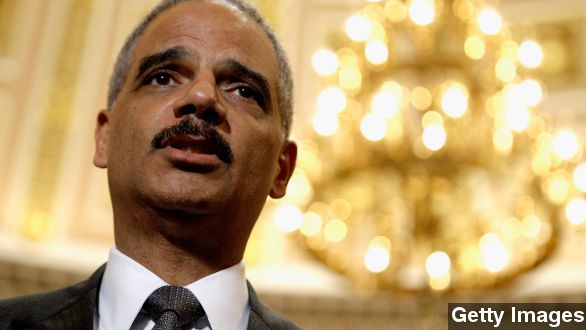Tens of thousands of prisoners serving time for federal drug offenses might now be getting an early release. (Getty Images)
By the numbers, here's what the U.S. Sentencing Commission's decision to retroactively apply reduced sentences could mean.
46,290 offenders would be eligible — as long as Congress doesn't block the decision. The panel estimates the average inmate could see their sentences reduced by around two years. (Getty Images)
The Wall Street Journal reports that's "one out of every five inmates in the federal system."
According to Families Against Mandatory Minimums, the average federal prison sentence is almost six years.
In 2012, 96.5 percent of drug offenders got prison sentences. That’s 23,000 people.
The New York Times adds prison spending makes up about a third of the Justice Department's budget.
It costs about $21,000 per inmate per year in the average minimum-security prison. In total, the fiscal year 2014 budget asks for $6.9 billion for the Bureau of Prisons. (Via California Department of Corrections)
Many media outlets say the reduced sentences are part of a broad, bipartisan effort to roll back some of the harsher penalties implemented during the height of the war on drugs in the 1980s. (Via The Hill, MSNBC, The Christian Science Monitor)
President Obama and Attorney General Eric Holder have been very vocal in their push for clemency for non-violent drug offenders, claiming the war on drugs disproportionately effects minorities — particularly African Americans. (Via The White House, The Huffington Post)
Holder praised this decision in a press release, writing: “This is a milestone in the effort to make more efficient use of our law enforcement resources and to ease the burden on our overcrowded prison system." (Getty Images)
The Bureau of Prisons says the federal inmate population exceeds capacity by 32 percent, giving the U.S. the highest prison population in the world.
The Economist explains: "America has around 5% of the world’s population, and 25% of its prisoners. Roughly one in every 107 American adults is behind bars, a rate nearly five times that of Britain, seven times that of France and 24 times that of India."
And the U.S. prison population has more than tripled since 1980, in part due to strict penalties enacted to address crack-cocaine abuse.
According to FBI statistics, of 12 million arrests in 2012, 1.5 million were for drug abuse violations. That makes drug offenses the most common cause of arrests in the U.S.
The releases will begin in November 2015, and will be phased in over a period of years. Congress has until November of this year to block it. Under the guidelines, no prisoner would be released until a judge determines whether a reduced sentence poses a threat to public safety.


